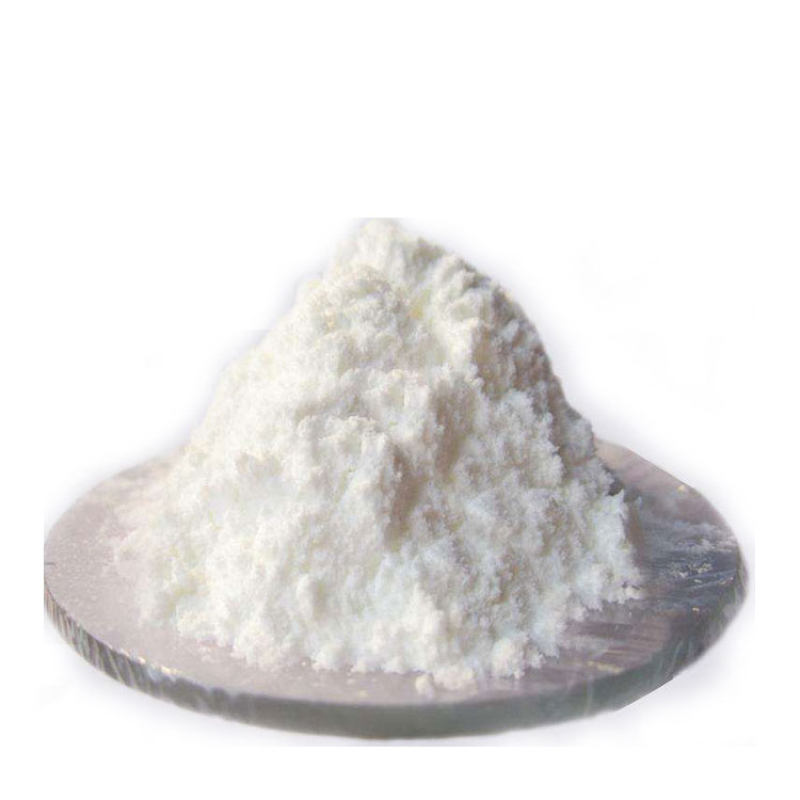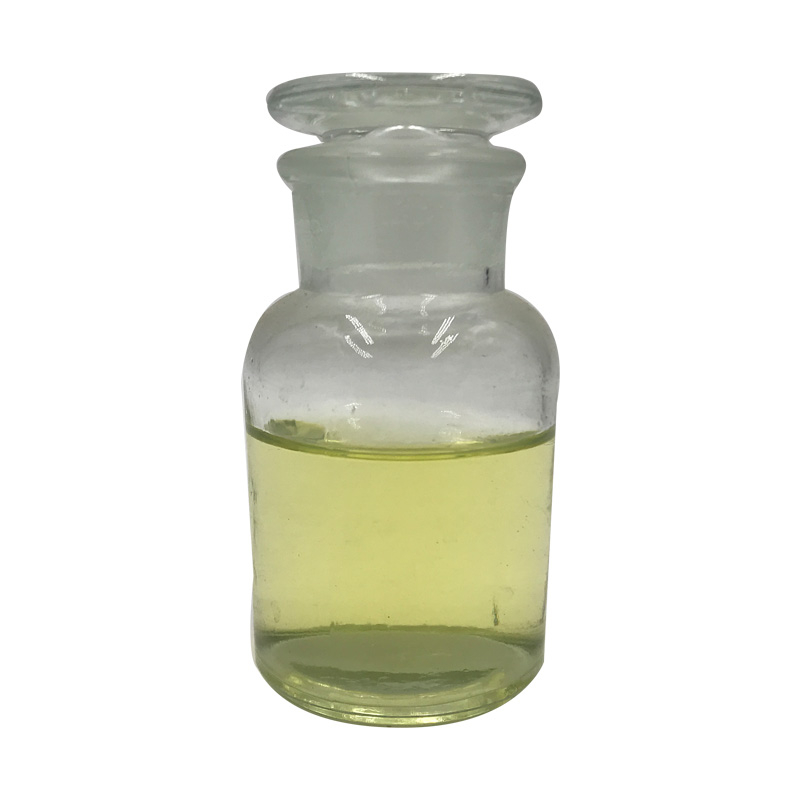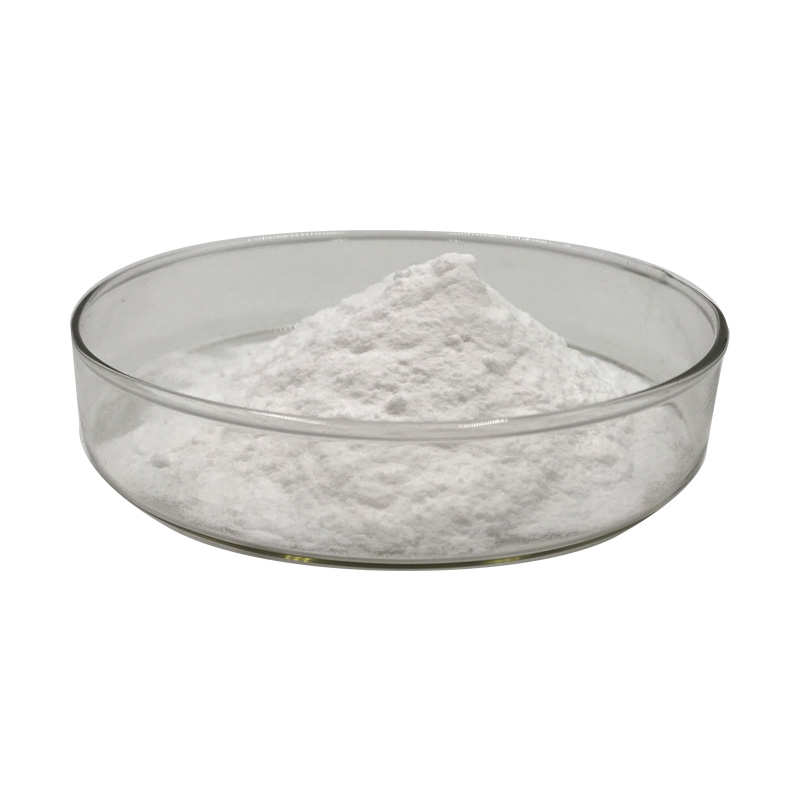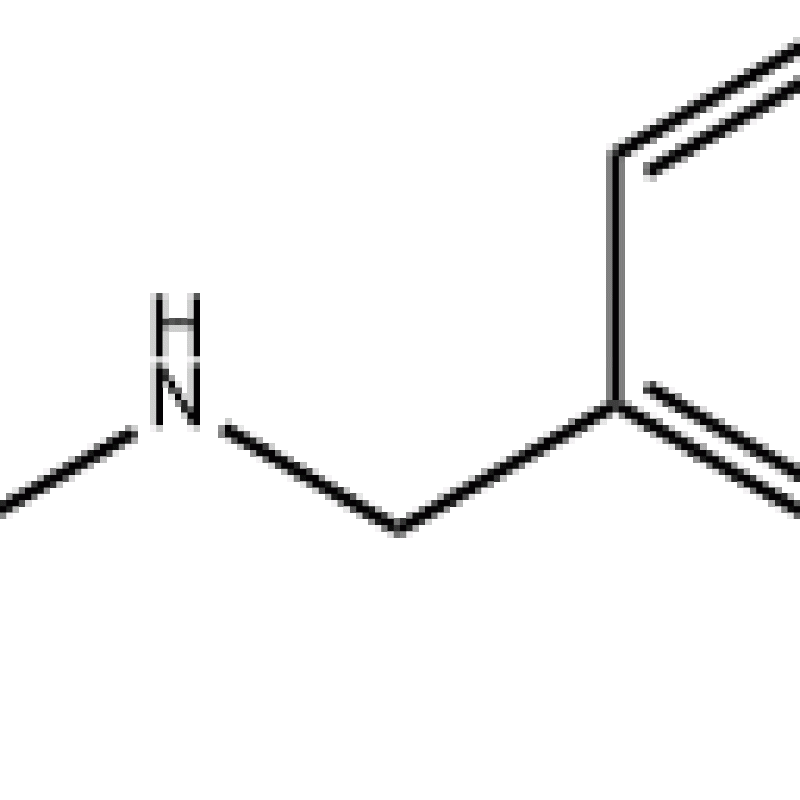Products Description of Oleic CAS#112-80-1Insoluble in water, soluble in benzene, chloroform, miscible with methanol, ethanol, ether and carbon tetrachloride. Because it contains double bonds, it is easily oxidized by air, producing an unpleasant odor and turning yellow. When treated with nitrogen oxides, nitric acid, mercurous nitrate and sulfurous acid, it can be converted into oleic acid. When hydrogenated, it becomes stearic acid. The double bonds can easily react with halogens to form halogenated stearic acid.
Contact Now
Oleic acid CAS#112-80-1Chemical Properties: Oleic acid, C17H33COOH, also known as red oil, elaine oil, and octadecenoic acid, is a yellowish unsaturated fatty acid with an aroma similar to lard. Oleic acid consists chiefly of (Ζ)-9-octadecenoic acid together with varying amounts of saturated and other unsaturated acids. It is insoluble in water, but soluble in most organic solvents.
Contact Now
Products Description of Oleic acid CAS#112-80-1Insoluble in water, soluble in benzene, chloroform, miscible with methanol, ethanol, ether and carbon tetrachloride. Because it contains double bonds, it is easily oxidized by air, producing an unpleasant odor and turning yellow. When treated with nitrogen oxides, nitric acid, mercurous nitrate and sulfurous acid, it can be converted into oleic acid. When hydrogenated, it becomes stearic acid. The double bonds can easily react with halogens to form halogenated stearic acid.
Contact Now
Products Description of Bis(2-ethylhexyl) phosphate CAS#298-07-7 Di(2-ethylhexyl) phosphate is a chemical substance. It is a viscous oily liquid with strong acidity.
Contact Now
Products Description of Coconut oil CAS#8001-31-8Coconut oil is an oil extracted from coconut pulp (dry pulp contains about 63% to 70% oil). It is a white semi-solid lard-like fat. It has a unique coconut fragrance. The main components are glycerides of lauric acid, myristic acid, and oleic acid. The melting point is 23 to 28°C. The relative density is 0.917 to 0.919 (25/25°C). The saponification value is 250 to 264. The iodine value is 8 to 12. The acid value does not exceed 6. It is soluble in alcohol, chloroform, ether, and carbon disulfide, but insoluble in water.
Contact Now
Products Description of Sodium Oleate CAS#143-19-1Sodium oleate, also known as sodium octadecenoate, cis-9-octadecenol, oleyl alcohol, cis-9-octadecenol, (Z)-octadecenol, olive oil alcohol, cis-9-octadecen-1-ol, 9-n-octadecenol, octadecenol. It is an organic oil with the chemical formula C17H33CO2Na. Sodium oleate is the main component of soap made from olive oil and tallow soap. It can also be made by reacting sodium hydroxide with oleic acid. It is a compound composed of a hydrophobic group and a hydrophilic group.
Contact Now
Products Description of Sodium Oleate CAS#143-19-1Sodium oleate, also known as sodium octadecenoate, cis-9-octadecenol, oleyl alcohol, cis-9-octadecenol, (Z)-octadecene-9-enol, olive oil alcohol, cis -9-Octadecen-1-ol, 9-n-octadecenol, octadecenol. It is an organic oil with the chemical formula C17H33CO2Na. Sodium acid acid is the main component of soaps made from olive oil and other soaps. It is also the main component of tallow soap. It can also be produced by the reaction of sodium hydroxide and oleic acid. It is a compound composed of hydrophobic and hydrophilic groups.
Contact Now
Product DetailsProducts Description of Octadecenoic Acid CAS#112-80-1Insoluble in water, soluble in benzene, chloroform, miscible with methanol, ethanol, ether and carbon tetrachloride. Because it contains double bonds, it is easily oxidized by air, producing an unpleasant odor and turning yellow. When treated with nitrogen oxides, nitric acid, mercurous nitrate and sulfurous acid, it can be converted into oleic acid. When hydrogenated, it becomes stearic acid. The double bonds can easily react with halogens to form halogenated stearic acid.
Contact Now
Products Description of Methanesulfonic acid CAS#75-75-2Methanesulfonic acid is an organic compound with the chemical formula CH4O3S. It is soluble in water, alcohol and ether, insoluble in alkanes, benzene, toluene, etc., does not decompose in boiling water and hot alkali, and is strongly corrosive to metals such as iron, copper and lead.
Contact Now
Products Description of (1H-indol-3-yl)(2,2,3,3-tetramethylcyclopropyl)methanone CAS#895152-66-6White powder(1H-indol-3-yl)(2,2,3,3-tetramethylcyclopropyl)methanone Chemical PropertiesBoiling point 375.0±15.0 °C(Predicted)density 1.099±0.06 g/cm3(Predicted)storage temp. 2-8°Csolubility DMF: 50 mg/ml; DMF:PBS (pH 7.2); (1:7): 0.13 mg/ml; DMSO: 33 mg/ml; Ethanol: 17 mg/mlform A crystalline solidpka15.50±0.30(Predicted)InChIInChI=1S/C16H19NO/c1-15(2)14(16(15,3)4)13(18)11-9-17-12-8-6-5-7-10(11)12/h5-9,14,17H,1-4H3InChIKeyWYZQBEQQQKCTHM-UHFFFAOYSA-NSMILESC(C1C2=C(NC=1)
Contact Now
Products Description of Ethylene glycol monoethyl ether acetate CAS#111-15-9Colorless liquid. Freezing point -61.7℃, boiling point 156.3℃, 51℃ (2.8kPa), relative density 0.973 (20℃), melting point -61.7℃, refractive index 1.4055 (20℃), flash point 51℃ (closed cup), 66℃ (open cup), ignition point 379℃. Miscible with general organic solvents and soluble in water.
Contact Now
Products Description of 1,2-Diformyloxyethane CAS#629-15-2Ethylene glycol diformate is a toxic substance that is liquid at room temperature and has a special odor.
Contact Now
(2-hydroxytrimethylene)bis(trimethylammonium) dichloride Chemical PropertiesMelting point 256-257 °C (decomp)Factory and Equipment ShowFast delivery timeInventory 2-3 working days New production 7-10 working days
Contact Now
Products Description of Dimefluthrin CAS#271241-14-6As a new type of pyrethroid hygienic insecticide, cypermethrin has a high protective effect on mosquitoes resistant to allethrin and prallethrin. The pesticide is safe for humans and does not pollute the environment. The dosage of its preparation is as low as 0.015%.Currently, cypermethrin coil mosquito coils mostly use the analysis method provided by Sumitomo Chemical Co., Ltd. of Japan, that is, GC-ECD (electron capture detector) analysis, and the pretreatment method is cumbersome.
Contact Now
Products Description of Diacetoneacrylamide CAS#2873-97-4Diacetone acrylamide has two reactive groups: N-substituted amide and ketone. It is very easy to copolymerize with other ethylene and monomers, thereby introducing ketocarbonyl groups into polymers. By utilizing the chemical properties of ketocarbonyl groups, polymers can undergo crosslinking and grafting reactions, and are used to prepare various adhesives, thickeners, paper reinforcing agents, crosslinking agents, etc.
Contact Now
Products Description of N-Isopropylbenzylamine CAS#102-97-6N-Benzylisopropylamine can be used as an intermediate in the synthesis of compounds and as a precursor in the production of certain drugs. Due to its similarity in appearance and physical properties to methamphetamine, it has been included in the DEA's consideration in recent years. N-Benzylisopropylamine forms an amine adduct with magnesium in toluene at room temperature. Using N-Benzylisopropylamine as a ligand, bis(cyclopentadienyl)magnesium was prepared and characterized.
Contact Now
4,4'-Methylenebis(N,N-diglycidylaniline) Chemical PropertiesBoiling point 619.3±35.0 °C(Predicted)density 1.15 g/mL at 25 °C(lit.)vapor pressure 0Pa at 24.85℃refractive index n20/D 1.601(lit.)Fp >230 °Fform clear liquidpka4.58±0.50(Predicted)color Light yellow to BrownWater Solubility 9.2mg/L at 20℃LogP2.12 at 22℃EPA Substance Registry SystemOxiranemethanamine, N,N'-(methylenedi-4,1-phenylene)bis[N-(oxiranylmethyl)- (28768-32-3)Safety InformationHazard Codes Xi,NRisk Statements 43-51/53Safety Statements
Contact Now
Products Description of N,N'-Carbonyldiimidazole CAS#530-62-1N,N′-Carbonyldiimidazole (CDI for short) is a derivative of imidazole. Its imidazole structure has a closed large P bond, and one of the nitrogen atoms has a lone pair of electrons in the unbonded sp2 orbital. These determine that CDI has strong chemical reactivity and can react with functional groups such as ammonia, alcohol, and acid to synthesize many compounds that are difficult to obtain by general chemical methods.
Contact Now
Products Description of N,beta-Dimethylphenethylamine hydrochloride CAS#5969-39-1A phenethylamine derivative as sympathomimetics.
Contact Now
Products Description of N,N-Diethyl-m-toluamide CAS#134-62-3DEET (diethylmethylbenzamide), also known as DEET, is a broad-spectrum insect repellent that repels a variety of biting insects in various environments, including stinging flies, midges, black flies, chiggers, deer flies, fleas, gnats, horse flies, mosquitoes, sand flies, small flies, stable flies and ticks. DEET was developed and patented by the U.S. Department of Agriculture during World War II. The product was designated as a mosquito repellent for use by the U.S. military in 1946.
Contact Now
Products Description of N-Methylformamide CAS#123-39-7Pure N-methylformamide is a colorless, transparent, viscous liquid with m.p.-3.8℃, b.p.198℃, n25D 1.4310, relative density 0.9986 (25℃). It is soluble in water and inorganic salts.
Contact Now
Products Description of Trimethyl orthopropionate CAS#24823-81-2Trimethyl orthopropionate is a chemical substance.Trimethyl orthopropionate Chemical PropertiesBoiling point 121-122 °C (lit.)density 0.944 g/mL at 20 °C (lit.)refractive index 1.397-1.399Fp 19 °Cstorage temp. Flammables areasolubility soluble in Chloroformform Liquidcolor Clear colorlessBRN 1736043CAS DataBase Reference24823-81-2(CAS DataBase Reference)NIST Chemistry ReferencePropane, 1,1,1-trimethoxy-(24823-81-2)Safety InformationHazard Codes Xi-F,Xi,FRisk Statements 36
Contact Now
Products Description of 2,2-Dimorpholinodiethylether CAS#6425-39-42,2-Dimorpholinyl diethyl ether is a transparent liquid.2,2-Dimorpholinodiethylether Chemical PropertiesMelting point -28 °CBoiling point 309 °C (lit.)density 1.06 g/mL at 25 °C (lit.)vapor pressure 66Pa at 20℃refractive index n20/D 1.484(lit.)Fp 295 °Fstorage temp. 2-8°Csolubility Chloroform (Slightly), Ethyl Acetate (Slightly)form Oilpka6.92±0.10(Predicted)color Pale Brown to Light BrownWater Solubility 100g/L at 20℃InChIKeyZMSQJSMSLXVTKN-UHFFFAOYSA-NLogP0.5
Contact Now
Products Description of Potassium methoxideCAS#865-33-8Potassium methoxide is an alcohol salt of methanol and potassium counter ion, and is used as a strong base and catalyst for transesterification reactions, especially for the production of biodiesel. Potassium methoxide includes liquid potassium methoxide and solid potassium methoxide. The liquid product is a colorless or slightly yellow, viscous methanol solution with a potassium methoxide content of about 28%-32%; the solid product is a light yellow powder with a potassium methoxide content of about 95%-97%.
Contact Now



































